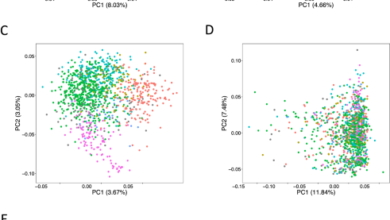Big Data as A Service Market to Reach US$89 Billion by 2028

Big Data as A Service Market Prediction: The Big Data as a Service market size is expected to reach US$89.94 billion by 2028 from US$28.37 billion in 2023, with a CAGR of 25.96%. Big Data as a Service (BDaaS) is a market trend which gains faster traction in the recent times due to the evolution of big data trends and novel technologies that deliver HaaS (Hadoop as a Service).
A BDaaS offering scales and expands to include everything the scope of storing, processing and analyzing big data, allowing companies to extract insights without all the capital investments. This article encapsulates the trends being seen in the BDaaS market now, future outlook of the market along with the role of the current key players, and identifies how upcoming and ongoing innovations and partnerships in this market are impacting the direction/footprint for the adoption of the big data technologies across the enterprises.
Factors driving the Big Data as a Service market growth
Many organizations create reams of data and BDaaS helps to harness this wealth of information into the benefit of future gains. By successfully performing information collection, storage, and interpretation, enterprises can predict various patterns and read the demand for the next foreseeable future and hence improve their future decisions and strategies to gain the competitive framework over others.
For instance, in Retail, BDaaS helps in inventory management and demand forecasting. Deriving value from raw data helps in uncovering trends, providing better experiences to customers, and supporting strategic decisions which fuels business growth and innovation.
With the flourishing digitalization and automation — data and data ligand are on hype since data is the language of the era. BDaaS offerings manage & process the data as they have the entire build setting along all the necessary tools as infrastructure to analyse the data. Big Data can help businesses improve operations, productivity and innovation.
BDaaS enables predictive maintenance, allowing manufacturers to collect and analyze data coming off of machinery and predicting when a machine is likely to fail and fixing it before it stops production. The data-driven approach enhances productivity, saves costs, and benefits the overall business performance, and establishes a competitive edge in the era of digitization.
Technological advancements in cloud AI, machine learning (ML), the Internet of Things (IoT), and advanced analytics are enhancing BDaaS capabilities. Cloud AI and ML swiftly process large datasets to uncover valuable insights. IoT devices generate real-time data, which BDaaS solutions analyze to optimize operations.
Advanced analytics, including predictive and prescriptive analytics, allow organizations to forecast trends and make proactive decisions. These innovations make BDaaS essential for leveraging cutting-edge technologies for better decision-making and operational efficiency.
BDaaS solutions enhance return on investment (ROI) and decision-making capabilities. By leveraging big data analytics, organizations identify cost-saving opportunities, optimize resource allocation, and improve efficiency. Real-time data analysis allows quick responses to market changes.
In finance, BDaaS helps detect fraud, manage risks, and optimize investments. Data-driven decisions lead to better outcomes, higher profitability, and sustained competitive advantages, making BDaaS an attractive investment for optimizing operations and driving strategic growth.
Awareness and adoption of BDaaS solutions are rising as organizations recognize their benefits. Successful case studies, industry reports, and marketing initiatives highlight the transformative impact of big data analytics. More sectors, including healthcare, finance, retail, and manufacturing, are embracing BDaaS.
This increased awareness drives higher adoption rates, as companies seek to leverage big data for competitive advantages. The growing trend towards BDaaS is expected to fuel significant market growth, with businesses prioritizing data-driven strategies to enhance performance and innovation.
Market restraints that may hinder the growth
Many legacy enterprises may struggle to understand the return on investment (ROI) and operational challenges associated with adopting BDaaS solutions, which can limit their adoption. The sheer volume and complexity of big data on the other hand can make it difficult for organizations to extract valuable insights, which can hinder the adoption of BDaaS solutions.
The handling and storage of sensitive data in the cloud can raise security and privacy concerns, which may deter some organizations from adopting BDaaS solutions. The lack of awareness about BDaaS solutions and the need for specialized professional expertise to implement and manage these solutions can also create barriers to adoption.
Economic uncertainty and the adverse impact of such uncertainty on decision-making processes can affect the adoption of BDaaS solutions, particularly in industries that are heavily influenced by market fluctuations. The highly competitive and fragmented BDaaS market can make it challenging for vendors to differentiate themselves and attract customers, which can hinder growth.
Additionally, executive buy-in, cultural hurdles, and organizational reluctance to change can hinder the adoption of BDaaS solutions, particularly in organizations that are not accustomed to adopting new technologies.
Recent Developments in the Big Data as a Service Market
Cloudera Inc. has introduced Cloudera Data Platform One (CDP One), a new SaaS-based data lakehouse designed for rapid, self-service analytics and exploratory data science in the cloud. CDP One simplifies the shift to cloud-based data workloads by offering built-in enterprise-grade security and machine learning capabilities, eliminating the need for extensive customer resources for deployment and maintenance.
This innovation aims to help enterprises, particularly those still operating on-premises, overcome regulatory and skill-related barriers to cloud migration. The platform, resulting from Cloudera’s acquisition of Cazena Inc., promises significant cost savings and ease of use, making advanced analytics accessible to a broader market.
Notable Partnerships in the Big Data as a Service Market
Telefónica and Huawei have partnered to launch LUCA-branded Big Data as a Service (BDaaS) products aimed at enterprises. This collaboration leverages Huawei’s technological expertise in cloud, big data, and AI to offer services such as data storage, processing, governance, and analytics.
Initially deployed over Telefónica’s cloud infrastructure in Latin America, the partnership aims to accelerate digital transformation for businesses. The agreement also includes plans for an application market for big data and analytics solutions, reinforcing Telefónica’s commitment to enhancing its BDaaS offerings and supporting enterprise digitalization.
Salesforce’s new Zero Copy Partner Network enhances the Big Data as a Service (BDaaS) market by fostering partnerships with prominent industry players such as Amazon Redshift, Databricks, Google Cloud’s BigQuery, Snowflake, and now Microsoft Azure. This collaboration allows seamless, secure, and efficient data integration across various platforms without the need for data replication.
Additionally, ISVs like Dun & Bradstreet and The Weather Company can distribute valuable datasets via zero copy support, enriching customer data in Salesforce Data Cloud. These partnerships enable businesses to harness unified, real-time data insights, driving personalized customer interactions and supporting trusted AI applications.
The Big Data as a Service (BDaaS) market is witnessing significant advancements through strategic partnerships. Telefónica and Huawei’s collaboration on LUCA-branded BDaaS products exemplifies how leveraging technological expertise can accelerate digital transformation for enterprises, particularly in regions like Latin America.
Similarly, Salesforce’s Zero Copy Partner Network highlights the importance of seamless data integration across platforms, fostering innovation and enhancing data utility without the complexities of data replication. These partnerships, involving industry leaders such as Amazon Redshift, Databricks, Google Cloud’s BigQuery, Snowflake, and Microsoft Azure, demonstrate a collective commitment to enhancing BDaaS offerings.
By enabling real-time, unified data insights and facilitating personalized customer interactions, these collaborations are driving the evolution of the BDaaS market, empowering businesses to harness the full potential of their data.
Conclusion
In conclusion, the future of Big Data as a Service market is poised for substantial growth, fueled by advancements in technology, strategic mergers and acquisitions, and the continuous integration of AI and machine learning capabilities. As businesses increasingly recognize the value of data-driven decision-making, the demand for BDaaS solutions is set to rise, offering enhanced efficiency, cost savings, and competitive advantage.
The future of the BDaaS market will be marked by further innovations and collaborations, ensuring that organizations can harness the power of big data to drive transformative business outcomes and navigate the complexities of the digital age.
FAQs
What is an example of big data as a service?
An example of big data as a service is Snowflake, which provides cloud-built data warehousing, data lake, and data sharing that natively ingests structured and semi-structured data seamlessly.
Snowflake’s unique architecture allows customers to store all data in a nearly limitless relational data warehouse, enabling data-driven decision-making.
What is the purpose of big data as a service?
The primary purpose of Big Data as a Service (BDaaS) is to provide organizations with scalable, flexible, and affordable data management platforms to analyze large data sets efficiently.
BDaaS enables companies to leverage cloud-based infrastructure and analytics engines to process massive amounts of data, derive insights, and make data-driven decisions.
Who uses big data as a service?
Big Data as a Service (BDaaS) is used by various organizations across industries, including healthcare, retail, and finance, to analyze large data sets and gain insights for better decision-making.
These organizations include health insurers, large retailers, and financial institutions that leverage cloud-based infrastructure and analytics engines to process massive amounts of data efficiently.
What is the function of big data services?
Big Data as a Service (BDaaS) provides cloud-based infrastructure and analytics engines to process and analyze large data sets efficiently, enabling organizations to gain insights and make data-driven decisions.
BDaaS integrates various services, including data warehousing, data lake, data sharing, and analytics, to offer scalable, flexible, and affordable data management platforms for businesses.
Why use database as a service?
Database as a Service (DBaaS) offers numerous benefits, including cost savings, rapid provisioning, enhanced security, and scalability, making it a strategic choice for organizations seeking to streamline database management and improve operational agility.
By leveraging DBaaS, companies can free up resources for more critical tasks, reduce administrative burdens, and ensure high-quality service levels, ultimately driving business growth and competitiveness.



